Data Structure and Types :Best Comprehensive Guide

In the vast landscape of computer science, data structures stand as the architectural blueprints of digital efficiency and innovation. Imagine them as the intricate frameworks that dictate how information is stored, accessed, and manipulated within the realms of software engineering and beyond. From the streamlined elegance of linear structures like arrays and linked lists to the complex interconnections of non-linear structures such as graphs and trees, each offers a unique perspective on organizing data. Join us on a journey through this foundational realm, where understanding these structures unlocks the power to build faster algorithms, smarter applications, and robust systems that define our digital future.
Table of Contents
What are Data Structures?
Data structures are fundamental constructs in computer science, essential for organizing and managing data effectively. They define the way data is stored, accessed, and manipulated within computer programs. From simple arrays to intricate trees and graphs, data structures cater to diverse needs in computing, optimizing operations like searching, sorting, and inserting data. Mastery of data structures empowers developers to design efficient algorithms and tackle complex computational tasks with precision. Essentially, data structures lay the groundwork for robust software development, enabling applications to handle vast amounts of data swiftly and reliably. Understanding them is key to building scalable, high-performance systems in modern computing environments.
Types of Data Structure
Linear Data Structures
1- Array Data Structure

Array Data Structure is a foundational concept in computer science, serving as a linear collection of elements stored at contiguous memory locations. In data structure terminology, arrays offer quick access to data through index-based retrieval, making them efficient for tasks like sequential data storage and retrieval. However, their fixed size can pose challenges when dynamically resizing or managing memory. Despite these limitations, arrays are pivotal in algorithm design, facilitating operations such as sorting and searching efficiently. Understanding the nuances of data structures like arrays is crucial for developers aiming to optimize performance and memory utilization in software applications.
2- Stack Data Structure
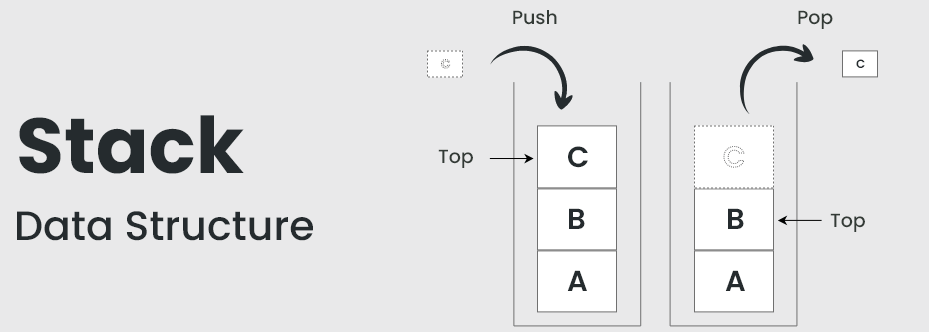
Stack Data Structure is a fundamental concept in data structure theory, operating on the Last In, First Out (LIFO) principle. It consists of elements organized in a linear order where all operations occur at one end, termed the top of the stack. Pushing and popping elements onto and off the stack respectively are core operations that facilitate efficient memory management and recursive algorithms. This structure is pivotal in managing function calls and maintaining program execution order in many programming languages. Understanding the nuances of data structures like stacks is essential for developers navigating memory allocation and algorithm design challenges.
3- Queue Data Structure
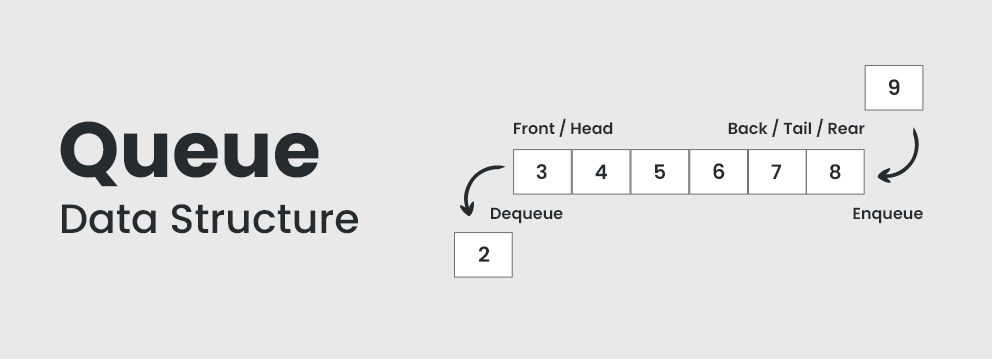
Queue Data Structure in data structure terms operates on a First In, First Out (FIFO) principle, where elements are added at the rear (enqueue) and removed from the front (dequeue). It’s akin to waiting in line at a supermarket, ensuring items are processed in the order they arrive. Queues are crucial in scenarios requiring sequential data handling, such as task scheduling, breadth-first searches in graphs, and managing resources with limited access points. This structure’s efficiency lies in its simplicity and predictability, making it indispensable in optimizing system workflows and maintaining logical data flow in various computational processes.
4- Linked List Data Structure
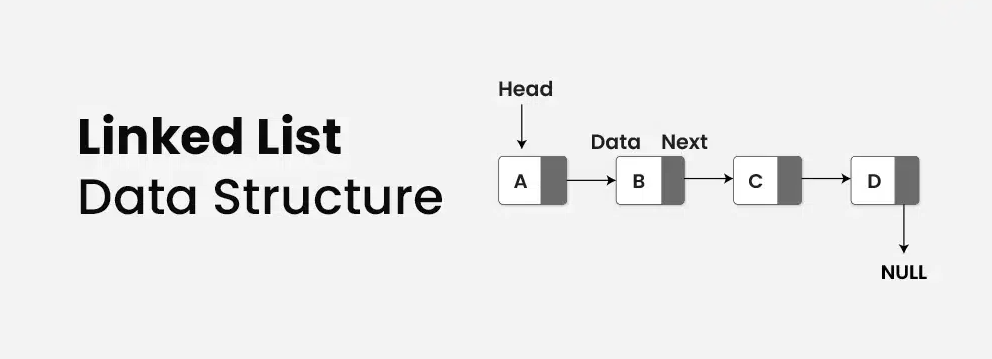
Linked List Data Structure in data structure parlance is a dynamic collection of nodes where each node points to the next node in the sequence. Unlike arrays, linked lists allow for efficient insertion and deletion of elements at any position, though accessing elements requires traversing from the beginning. This structure comes in various types, including singly linked lists, doubly linked lists, and circular linked lists, each offering unique advantages depending on specific application needs. Linked lists are fundamental in scenarios where flexibility in memory allocation and dynamic data management are critical, such as implementing stacks, queues, and maintaining large datasets with varying sizes.
Non-linear Data Structures
1- Graph Data Structure
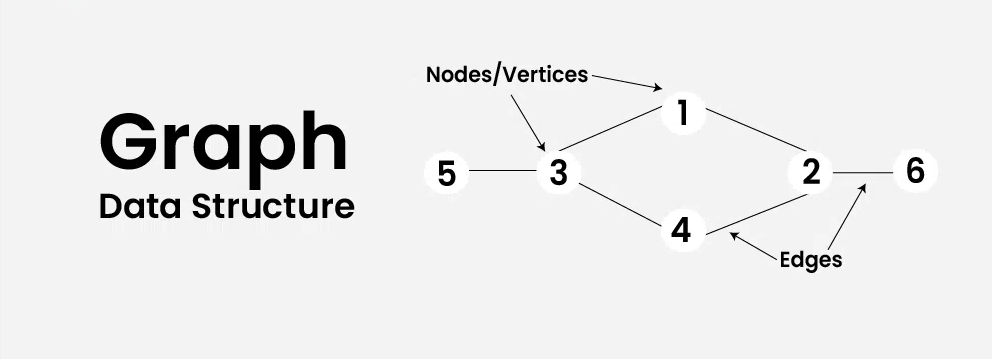
Graph Data Structure is a versatile model used to represent relationships between objects. It consists of vertices (nodes) connected by edges, allowing complex networks to be mapped efficiently. Graphs are categorized into directed and undirected types, with weighted edges providing additional context. They find application in various fields such as social networks, route planning algorithms, and database management systems. Graph algorithms like Dijkstra’s and Kruskal’s are pivotal for optimizing shortest path and spanning tree problems, showcasing the practical utility of graphs in computational tasks requiring extensive connectivity analysis.
2- Trees Data Structure
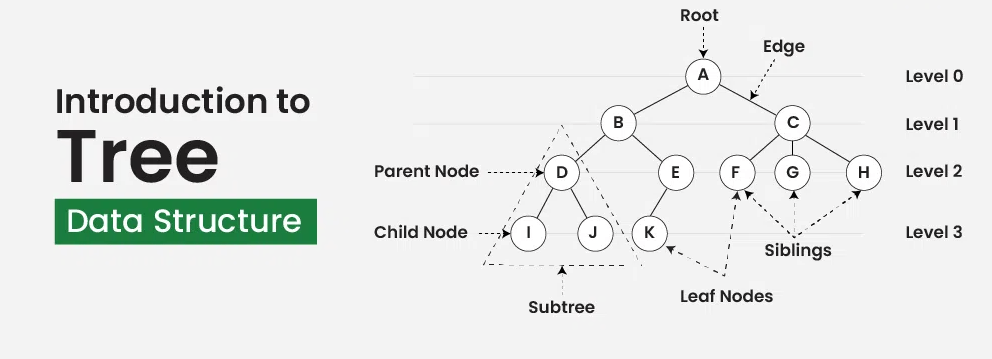
Trees Data Structure in data structure theory are hierarchical representations consisting of nodes connected by edges. They begin with a root node and branch out into parent and child nodes, forming a tree-like structure. Various types include binary trees, AVL trees, and B-trees, each optimized for specific operations like searching, insertion, and deletion. Trees facilitate efficient data organization and retrieval, making them fundamental in databases, file systems, and compiler implementations. Their balanced variants ensure optimal performance in dynamic environments, illustrating their versatility in managing hierarchical relationships within computational frameworks.
Linear Vs Non-linear Data Structures
Linear Data Structures
| Linear Data Structures | Description |
|---|---|
| Arrays | Store elements in contiguous memory locations, allowing efficient random access and traversal using indices. Suitable for scenarios requiring constant-time access to elements. Used in algorithm design and data manipulation. |
| Stacks | Follow Last In First Out (LIFO) principle. Elements are added and removed from the top. Used in function calls, expression evaluation, and backtracking algorithms. |
| Queues | Follow First In First Out (FIFO) order. Elements are added at the rear and removed from the front. Used in scheduling tasks, job management, and breadth-first search algorithms. |
| Linked Lists | Consist of nodes where each node contains data and a reference (link) to the next node. Allow dynamic memory allocation and efficient insertion/deletion operations. Used in scenarios with frequent modifications. |
Non-linear Data Structures
| Non-linear Data Structures | Description |
|---|---|
| Trees | Hierarchical structures with a root node and child nodes. Enable efficient hierarchical data representation, searching, sorting, and traversal. Examples include binary trees. |
| Graphs | Consist of vertices (nodes) and edges connecting these vertices. Used to model relationships between entities in applications like social networks and routing algorithms. |
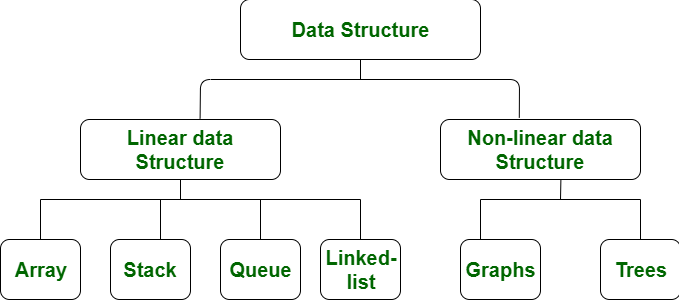
Conclusion
In conclusion, understanding various data structures is paramount for efficient algorithm design and problem-solving in computer science. From simple arrays and linked lists to complex trees and graphs, each data structure offers unique advantages and applications. Mastery of these structures allows for optimized data management, improved performance, and enhanced scalability in software development. By leveraging the right is for a given problem, developers can create robust and efficient solutions that address specific computational needs. Ultimately, a profound comprehension is a cornerstone for any aspiring programmer or seasoned professional in the field.
Choosing the optimal data structure is crucial for developing efficient algorithms.
FAQ on Data Structures
- What is a data structure? A data structure is a specialized format for organizing, processing, and storing data. It allows efficient access and modification of data.
- Why are data structures important in programming? Data structures are crucial because they provide a means to manage large amounts of data efficiently, enabling faster and more efficient processing and retrieval.
- What are the types of data structures? The main types of data structures include arrays, linked lists, stacks, queues, trees, and graphs, each serving different purposes and use cases.
- How do data structures impact algorithm performance? Choosing the right data structure can significantly affect the performance of an algorithm, making it faster and more efficient in terms of time and space complexity.
- What is the difference between linear and non-linear data structures? Linear data structures like arrays and linked lists store data in a sequential manner, while non-linear data structures like trees and graphs store data in hierarchical or interconnected forms.
- What are some common operations on data structures? Common operations on data structures include insertion, deletion, traversal, searching, and sorting, each of which may vary in complexity based on the data structure used.





Hurray, this is just the right information that I needed. You make me want to learn more! Stop by my page ZH5 about Outsourcing.
very informative articles or reviews at this time.
I love how you cover this topic with such depth and clarity. It’s evident that you put a lot of effort into researching and presenting this information. Well done!
The depth of research and clarity in your writing is truly impressive. I found this article very helpful and will definitely be applying some of these ideas.
I don’t think the title of your article matches the content lol. Just kidding, mainly because I had some doubts after reading the article.
You’re so awesome! I don’t believe I have read a single thing like that before. So great to find someone with some original thoughts on this topic. Really.. thank you for starting this up. This website is something that is needed on the internet, someone with a little originality!
I always enjoy reading your blogs because they are filled with useful and practical information. This post was no different—great job!
This is really interesting, You’re a very skilled blogger. I’ve joined your feed and look forward to seeking more of your magnificent post. Also, I’ve shared your site in my social networks!
Can you be more specific about the content of your article? After reading it, I still have some doubts. Hope you can help me. https://accounts.binance.com/ES_la/register?ref=T7KCZASX